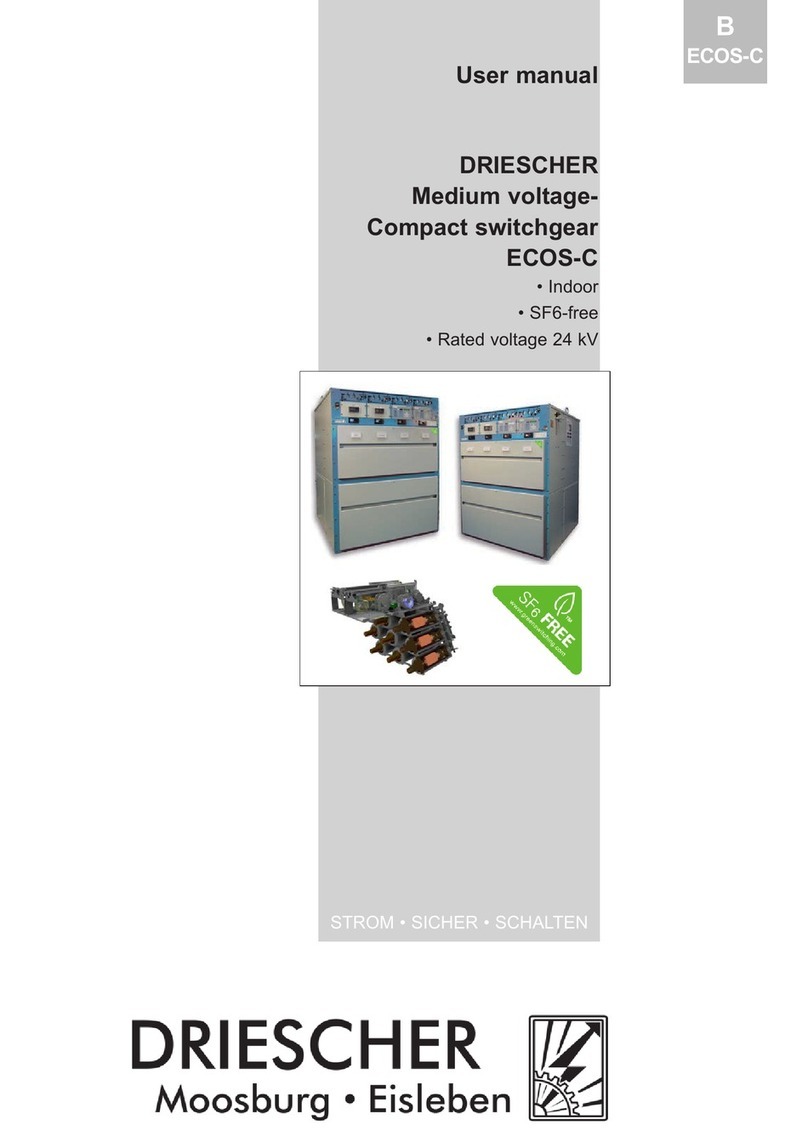Low voltage-fused-switch disconnector system 403 Assembly
B843
3 Assembly
3.1 Transport and storage of the low voltage-fused-switch disconnector system 403
For transport and assembly, only mount the low voltage-fused-
switch disconector system 403 from the outside, do not grip it into
the system from the back, bottom or top.
Protect the low voltage-fused-switch disconnector system from
damage, moisture and contamination until it is installed.
3.2 General
The low voltage-fused-switch disconnector system 403 must be installed in a suitable housing and
must be protected against contamination. The installation position is vertical. The installation of the low
voltage-fused-switch disconnector system 403 on under-voltage busbars is carried out with a insula-
ting socket wrench tested in accordance with EN 60900 (DIN VDE 0682 Part 201) or EN 61477 (DIN
VDE 0682 Part 130).
For live-line working, the provisions of DIN VDE 0105 Part 1 must be complied with. Live-line
working may only be carried out by specially trained specialists.
Please refer to the Safety Tools instructions for use (Order No. 3-81301043).
Insulating socket wrench scope of delievery:
Pic. 4
10 / 16
Top side
Back side
Bottom side
Pos. Part-No. Length / Socket wrench Description
1a 2-840 31005 300 mm, Set Pos. 2 - 5
Ratchet wrench, fully insulated according to
VDE, scoop-proof up to 1000 V according to
097429 for nut, detent edged ring and washer
1b
2-840 31006
300 mm, Set Pos. 2 - 4, 6
Ratchet wrench, fully insulated according to
VDE, scoop-proof up to 1000 V according to
097429-002 for nut and tension washer
22-319 00013 1/2 “
Ratchet wrench for right and left batter, accor-
ding to DIN 7449 1/2 “, isolated,
Observe the instruction manual ratchet!
Order-no.:3-81301043
32-611 37790 250 mm, 1/2 “ Extension DIN 7449 1/2 “, isolated,
42-319 0023 SW 13, 1/2 “ Socket wrench SW 13 (M8) 1/2 “,
isolated, for assembly on the frame
52-840 31001 SW 19, 1/2 “
universal joint SW 19 (M12) 1/2 “,
isolated, for busbar mounting with the
supports for nut, detent edged ring and washer M12
62-840 31002 SW 19, 1/2 “
universal joint SW 19 (M12) 1/2 “,
isolated, for busbar mounting with
the supports for nut und tension washer M12




























